Silent Notary (UBSN) Token Calculator
Token Information
Investment Scenario
Risk Assessment
Key Risk Factors:
- Extremely low liquidity on single exchange
- High price volatility (±9.9% daily)
- Unclear regulatory status
- Uncertain adoption of notarization service
- Unproven technology at scale
Investment Results
Projected Value: $1,059.00
Potential Return: +5.90%
- Slippage on trades
- Transaction fees
- Volatility impact
- Market timing risk
About Silent Notary (UBSN)
Silent Notary (UBSN) is a blockchain-based token powering a decentralized notarization service. It operates on the UBIX.Network using DAG architecture for fast, low-cost transactions. The token is required for notarization fees and serves as a utility token in the ecosystem.
Disclaimer: This calculator provides estimates only. Cryptocurrency investments are highly speculative and risky. Always do your own research and consider consulting a financial advisor.
When you see Silent Notary (UBSN) mentioned in a crypto forum, you might wonder if it’s just another meme coin or something with real utility. In short, it’s a token built to power a blockchain‑based notarization platform, aiming to replace traditional notaries with a smartphone‑friendly, immutable service. Below is a plain‑English breakdown of what the token does, how it’s structured, where you can trade it, and the main risks you should keep in mind.
Quick Summary
- Silent Notary (UBSN) is a crypto token that fuels a decentralized notarization service on the UBIX.Network.
- The platform uses a DAG‑based ledger to timestamp and verify digital events across multiple nodes.
- Token supply is capped around 190billion, with circulating figures varying between 159billion and 186billion depending on the data source.
- Price data is scattered: CoinGecko shows about $0.055, while other trackers list values in the micro‑dollar range.
- Liquidity is thin - most trading happens on Probit - which drives high volatility and wide bid‑ask spreads.
What Is Silent Notary?
Silent Notary (UBSN) is a blockchain‑based cryptocurrency token that powers a decentralized notarization service. The core idea is simple: replace the paper‑and‑pen process of a human notary with an algorithm that creates an immutable timestamp for any digital document or event. Users can launch the service from a smartphone app, upload a file or enter a hash, and the network records a proof that cannot be altered later.
The platform markets itself as “instant, everywhere, and cheap,” promising 100% protection against falsification. While the service itself is the main product, the UBSN token is required to pay for notarization fees, incentivize node operators, and, potentially, to stake for governance.
How the Technology Works
The backbone of Silent Notary is the UBIX.Network a private blockchain that uses a Directed Acyclic Graph (DAG) architecture for fast, low‑cost transactions. Unlike traditional linear blockchains, a DAG lets many transactions be recorded simultaneously, which reduces bottlenecks and lowers fees - a crucial factor for a service that may handle millions of tiny notarizations.
Each notarization request is broadcast to multiple independent nodes. Those nodes double‑check the timestamp and hash before committing the record to the DAG ledger. This distributed verification mimics the old practice of publishing a notice in a newspaper to prove a date, but with cryptographic certainty and global reach.
For developers, the token is also deployed on the public Ethereum network via a smart contract. The contract address is 0x86efc496dca70bcfd92d19194290e8457a375773 the Ethereum ERC‑20 contract for UBSN. This means you can hold UBSN in any Ethereum‑compatible wallet like MetaMask, and you can interact with the token programmatically.
Tokenomics - Supply, Distribution, and Pricing
Supply numbers differ across data aggregators, but the general picture is clear:
- Maximum supply: roughly 190billion UBSN (CoinGecko).
- Circulating supply: reports range from 159.6billion to 186.46billion.
- Fully diluted valuation (FDV): about BTC5.1455, which translates to roughly $1.3billion at current Bitcoin prices.
Pricing is the most confusing part. As of October2025:
- CoinGecko lists UBSN at $0.05552 with a 24‑hour volume of $3,319.
- CoinStats shows a micro‑price of $0.00000642 and a market cap of $1,024,939.
- CoinCodex reports $0.05137.
These discrepancies arise from different data pulls (some reflect the Ethereum ERC‑20 market, others the private UBIX ledger) and from the token’s low liquidity, which makes price updates highly volatile.
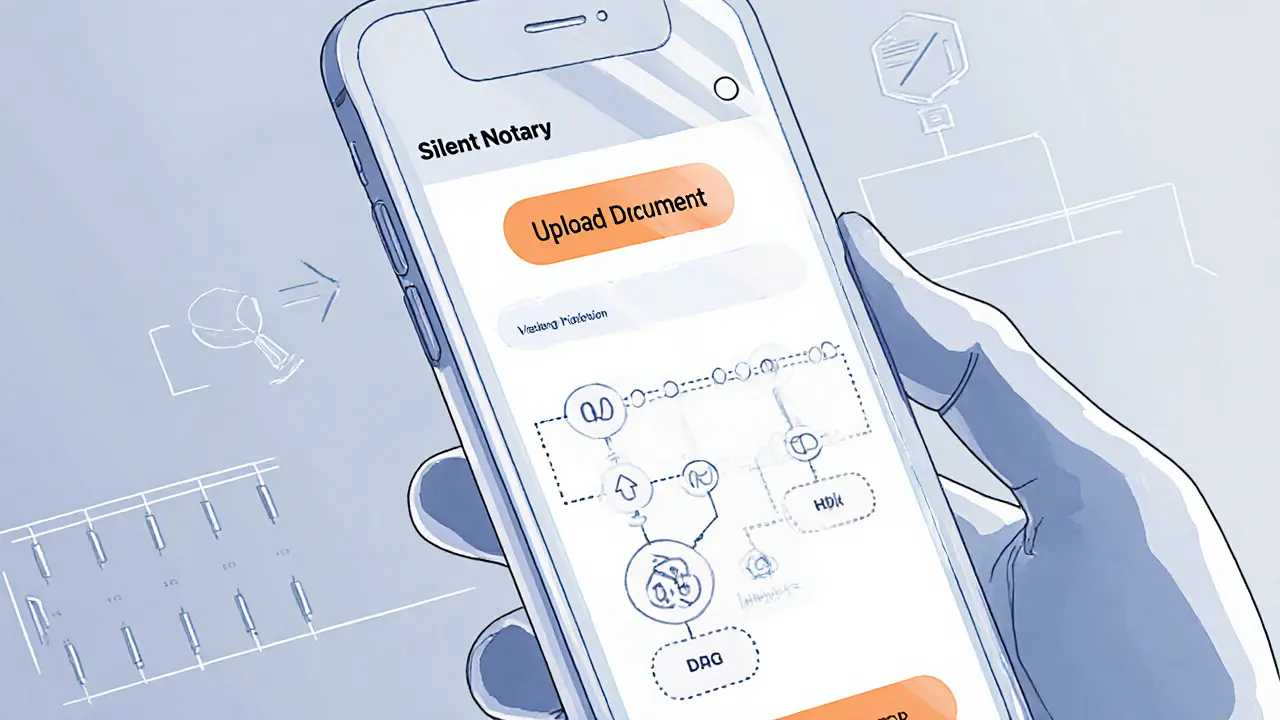
Where to Trade UBSN and Liquidity Concerns
UBSN isn’t listed on major exchanges like Binance or Coinbase. The primary venue is Probit a smaller cryptocurrency exchange that hosts the UBSN trading pair. On Probit the 24‑hour volume hovers around $2,000, representing essentially the whole market activity for the token.
Thin order books mean price slippage can be severe. If you place a market order for a few thousand dollars worth of UBSN, the price could jump several hundred percent in seconds. This lack of depth is a red flag for anyone thinking of using UBSN as a store of value.
Technical Analysis & Price Outlook
Recent market data paints a mixed picture:
- 7‑day performance: +23.4% (CoinGecko), outperforming both the overall crypto market (+9.3%) and the Ethereum ecosystem (+12.7%).
- RSI (14‑day) sits at 38.6, nudging toward oversold territory.
- Fear & Greed Index: 24 - “Extreme Fear,” suggesting that sentiment is heavily bearish.
- All‑time high: $0.0008507 (April2022). All‑time low: as low as $0.00000256 (April2025) according to some trackers.
Technical indicators on TradingView label the token as a “sell” on daily, weekly, and monthly timeframes, driven by weak volume and a downward moving average crossover. While short‑term momentum looks slightly bullish, the broader trend remains negative.
Price forecasts are wildly divergent. CoinCodex projects a modest rise to $0.059 by April2025, whereas longer‑term models for 2026 place UBSN somewhere between $0.00000079 and $0.000021. Given the token’s volatility (≈9.9% daily) and limited market participation, any price target should be treated as speculative.
Real‑World Use Cases
The practical value of UBSN hinges on the notarization service itself. Here are a few scenarios where the platform claims to add value:
- Legal contracts: Parties can upload a PDF, receive a cryptographic proof of the exact moment the contract was signed, and use that proof in court.
- Supply‑chain events: A manufacturer can timestamp a batch number, and downstream partners can verify that the record has never been altered.
- Intellectual‑property claims: Creators can hash a piece of content (e.g., a song or artwork) and store the hash on the network, establishing a provable creation date.
Because the service runs on a private DAG network, transaction fees are negligible - often a few cents in UBSN terms. This makes the product attractive for high‑volume, low‑value events that would be too expensive on Bitcoin or Ethereum.
Risks and Red Flags
- Liquidity: Trading is confined to a single small exchange, leading to high slippage.
- Data inconsistency: Price, supply, and volume figures differ across aggregators, indicating weak market data infrastructure.
- Technical bearishness: Multiple charting platforms show sell signals and a low RSI, suggesting downward pressure.
- Development opacity: The official website focuses on the notarization service, but there’s no clear roadmap for token upgrades or ecosystem growth.
- Regulatory uncertainty: Offering notarization as a legal service may be subject to local law, and the token could be classified as a security in some jurisdictions.
Investors should treat UBSN as a high‑risk speculative asset. The utility of the notarization platform is the only tangible hook, and even that is unproven at scale.
How to Acquire UBSN (Step‑by‑Step)
- Set up an Ethereum‑compatible wallet (e.g., MetaMask). Make sure you have a small amount of ETH for gas fees.
- Visit the Probit exchange that lists UBSN website and create an account. Complete KYC if required.
- Deposit ETH or a supported fiat currency into your Probit account.
- Navigate to the UBSN trading pair (usually UBSN/USDT or UBSN/ETH) and place a limit order at a price you’re comfortable with. Avoid market orders because of slippage.
- After the order fills, withdraw the tokens to your personal wallet using the ERC‑20 contract address (0x86efc496dca70bcfd92d19194290e8457a375773).
- If you intend to use the notarization service, download the Silent Notary mobile app, log in with the same wallet address, and start notarizing documents.
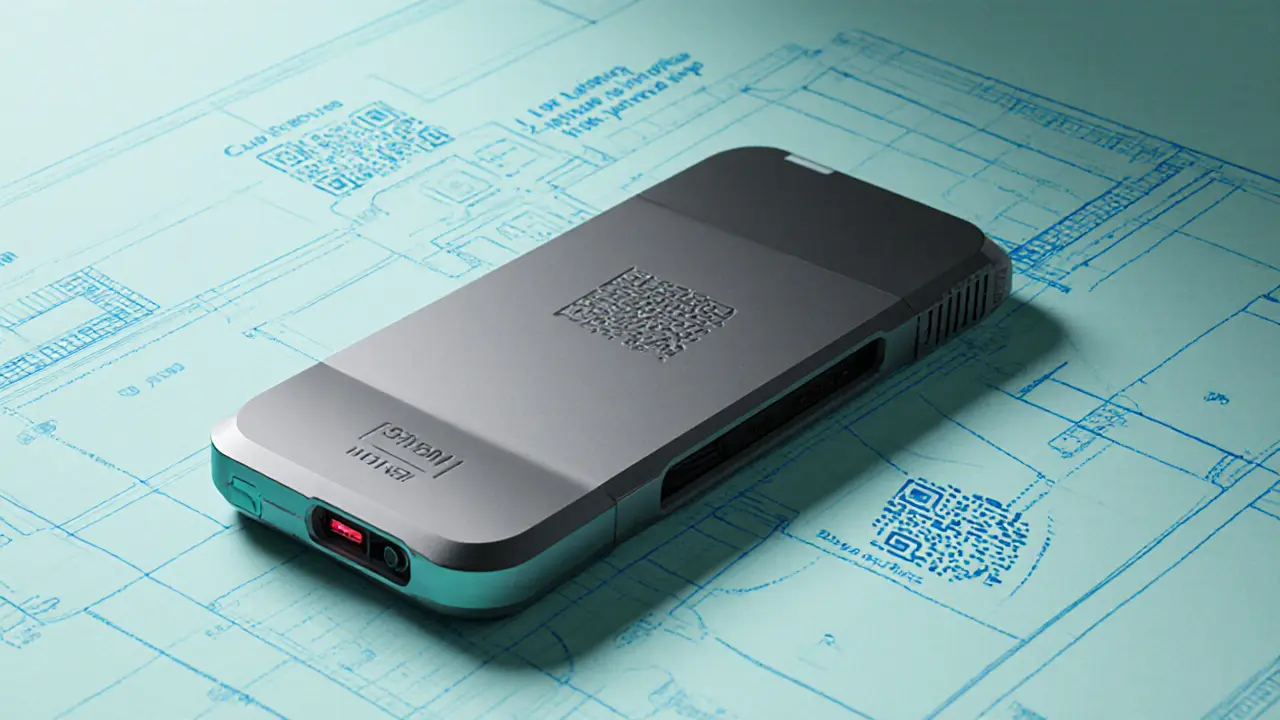
Frequently Asked Questions
What problem does Silent Notary aim to solve?
It replaces traditional notary offices with a blockchain‑based timestamp that is immutable, cheap, and accessible from any smartphone.
Is UBSN a utility token or a security?
The project markets UBSN as a utility token for paying notarization fees, but regulators in some countries could still view it as a security, so legal advice is recommended.
Where can I trade UBSN?
The primary exchange is Probit. Some decentralized platforms may list UBSN, but liquidity is minimal.
How are notarization timestamps verified?
When you submit a document hash, multiple UBIX nodes independently check and record the hash on a DAG ledger, creating a consensus‑based timestamp that cannot be altered.
Is the UBSN token inflationary?
The token has a hard cap around 190billion, so no new tokens are minted beyond that limit. However, large portions remain locked or uncirculated, affecting effective supply.
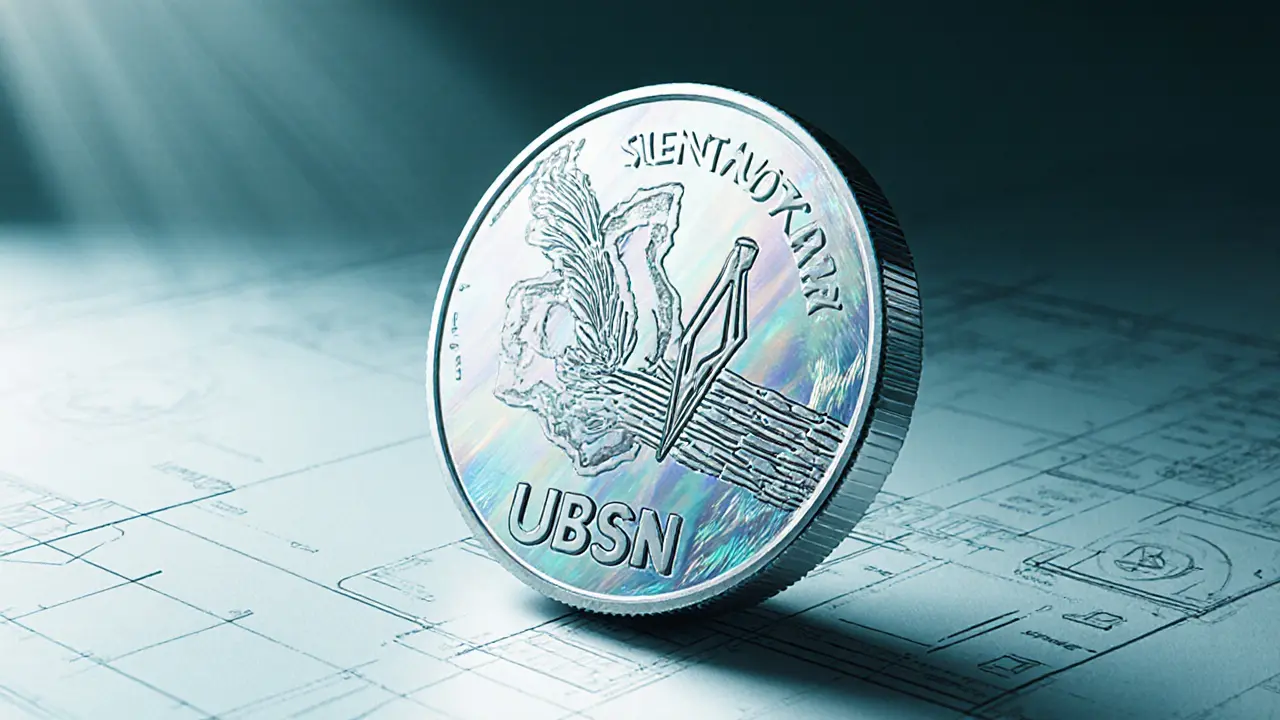
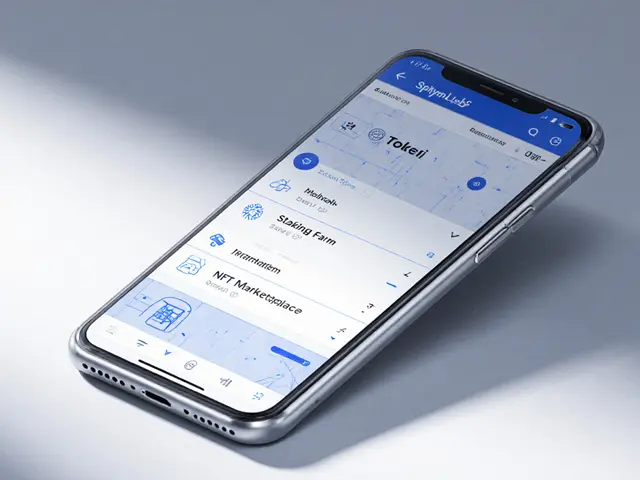



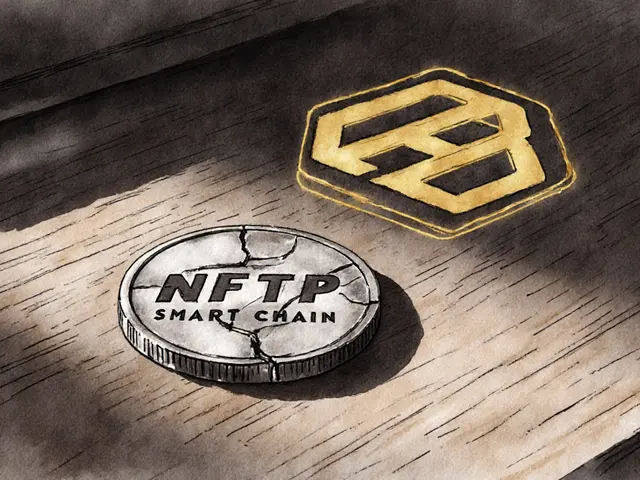
Danielle Thompson
5 September, 2025 . 19:45 PM
Keep pushing forward, you’ve got this! 🚀
Eric Levesque
12 September, 2025 . 21:00 PM
America should stay on top of crypto innovation, no foreign token can beat home‑grown tech.
alex demaisip
19 September, 2025 . 19:40 PM
Silent Notary (UBSN) presents a tokenomics model predicated upon an ostensibly vast maximum supply of approximately 190 billion units, a figure which, in isolation, engenders concerns regarding token dilution. The circulating supply, reported variably between 159.6 billion and 186.46 billion, further obfuscates accurate market‑cap calculations. Price data across aggregators diverge substantially; CoinGecko lists a price near $0.055, whereas alternative sources cite micro‑prices in the order of $0.000006, reflecting inconsistencies in data feeds. Such discrepancies are symptomatic of a fragmented liquidity ecosystem, predominantly confined to the Probit exchange, where 24‑hour volume scarcely exceeds a few thousand dollars. The paucity of depth precipitates pronounced slippage, rendering sizable orders impractical without market impact. From a technical perspective, the UBIX.Network employs a Directed Acyclic Graph architecture, which ostensibly affords parallel transaction validation and reduced fees relative to linear blockchains. Nevertheless, the adoption of a private DAG ledger raises questions about decentralization thresholds and auditability. The notarization service itself aspires to replace conventional notarial processes by timestamping document hashes, a function that, while conceptually sound, has yet to achieve substantive adoption at scale. Regulatory ambiguity compounds risk, as notarization services may intersect with jurisdiction‑specific legal frameworks, potentially invoking securities classifications. Moreover, the token’s utility is presently confined to fee payment within the platform, limiting external demand drivers. Investors must also contend with a heightened volatility metric, approximating ±9.9 % daily, which is atypical for assets with purported utility functions. Technical analysis on mainstream platforms flags a bearish trend, with moving average crossovers and low relative strength indices. In contrast, short‑term momentum indicators suggest marginal bullishness, creating a paradoxical analytical landscape. Projections for future price vary dramatically, ranging from modest appreciation to near‑zero valuations, underscoring the speculative nature of the asset. Consequently, any investment thesis should be predicated upon rigorous due diligence, an appreciation of liquidity constraints, and an acknowledgement of the nascent stage of the underlying service.
Elmer Detres
26 September, 2025 . 18:20 PM
While the patriotic fervor is understandable, the essence of decentralization lies in transcending borders; risk management is a universal principle, not a national monopoly.
Tony Young
3 October, 2025 . 17:00 PM
Imagine a world where every legal document is sealed in immutable digital amber-UBSN promises exactly that, yet the specter of liquidity drought looms like a thundercloud ready to dissolve the dream.
Fiona Padrutt
10 October, 2025 . 15:40 PM
Don’t waste time with obscure tokens; put your faith in projects that boost our national tech agenda.
Briana Holtsnider
17 October, 2025 . 14:20 PM
This token is a textbook case of hype‑driven overvaluation, a bubble waiting to burst under any regulatory glance.
Corrie Moxon
24 October, 2025 . 13:00 PM
Even so, some nascent utilities can find a niche; we should watch for real adoption signals before discarding outright.
Jeff Carson
31 October, 2025 . 11:40 AM
Curious about how the DAG architecture truly scales-does it really beat traditional blockchains in throughput?
Anne Zaya
7 November, 2025 . 10:20 AM
It’s pretty slick, but the real test is how many docs actually get notarized daily.
Emma Szabo
14 November, 2025 . 09:00 AM
UBSN’s tokenomics resemble a sprawling metropolis-massive supply, scattered liquidity, and a handful of bright downtown districts where the price actually moves.
Fiona Lam
21 November, 2025 . 07:40 AM
Exactly, it’s a wild jungle out there and most traders get lost in the undergrowth.
OLAOLUWAPO SANDA
28 November, 2025 . 06:20 AM
Everyone cries about risk, but risk is just opportunity wearing a different mask.